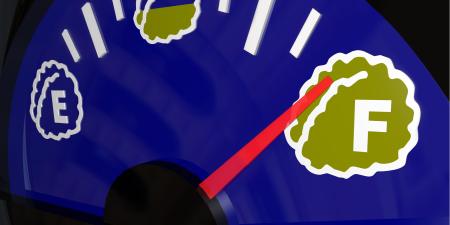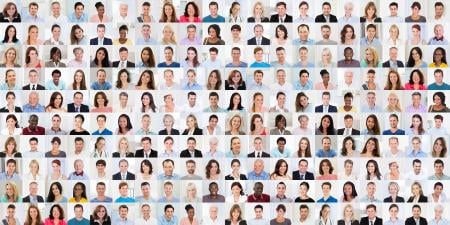I watched my patient's son cut up the bland, over-boiled hospital chicken and feed it to his mother, who was languishing in the neverland of dementia and stroke. I could see him thinking, "This? This is my mother?" It did seem hard to believe; the thousand individual, ordinary attributes that made this woman who she was had been wiped away. No more clunky piano playing, carefully applied lipstick, opinions on the economy, or babies dandled on the knee. For physicians and physicians-in-training, such a scene packs a hard punch because we wrestle personally with clinical decision making regarding the determination of capacity and end-of-life care, but we also watch helplessly as our own loved ones struggle with sporks and barely edible meat.
The theme of this month's Virtual Mentor issue is medicine and personhood, which at first glance appears a bit abstruse. "Personhood" sounds like the purview of philosophers and theologians, the sort of topic that is more germane to those heady wine-soaked evenings we enjoyed in college than to the white tiled corridors of the modern hospital. And yet the central questions posed by the concept—questions like "Who is a person and who is not?" "When does one begin—and cease—to be a person?" "Is there an enshrined view of personhood espoused by scientific medicine?"—are extremely relevant to clinical practice today.
In fact, questions of personhood are so relevant that they comprise the most hotly debated political and ethical issues of our time. Stem cell research, abortion rights, end-of-life care, competency to stand trial, capacity to make decisions for one's self, the nature of mental illness—all presuppose a view of the human person. The range of this subject is so large, in fact, that it is impossible to explore all areas in sufficient depth in one journal issue. For that reason, I decided to narrow the scope to the sine qua non of the personhood debates: the relationship between mind, body, and brain.
The relationship between mind and brain has been a subject of philosophic argument for millennia. There are two generally accepted views. One, monism, states that the mind is a function of the physical brain. The other, dualism, holds that the mind and brain are separate entities, made of different substances. Many adherents to the dualism position invoke ideas of soul or spirit to convey the concept of mind. Obviously questions about the nature of the mind and its connection to the brain are of great significance and contention in medicine. Psychotherapy versus psychotropic medication, neurologically based signposts of consciousness and personhood, the interplay among somatization disorders, conversion disorders, and other psychosomatic effects of disease—medicine is replete with their puzzling residua.
The human person, however conceptualized, is a delicate interplay of mind and body. Consider the case presented to commentator J. Wesley Boyd: the psychogenic physical suffering of a patient with a pathological fear of a heart attack is relieved by a therapeutic chest X-ray and EKG. Should the physician's attention be focused on the root psychiatric cause of illness, or should the patient's physical symptoms be addressed first? How should a clinician approach the interworking of mind and body? Boyd argues that there is an ethical imperative to treat suffering wherever it is found and pleads for physician humility when treading in this land of unknowns.
Another fascinating area where the dilemmas of personhood come bubbling to the surface is that of neuroethics. Kristi Kirschner comments on a patient who underwent a profound personality change after a traumatic brain injury. Is he the same person as he was before the accident? Can he undo decisions he previously made—that is, can this new personality claim to speak for the past and future patient? Kirschner discusses how to determine and assess decision-making capacity within a philosophical framework of identity and self.
And what of the patient who appears to be more than one person—or at least to have more than one distinct personality? We present a case of a patient with dissociative identity disorder who is fractured into various selves, one of which is capable of violent behavior. Can that antisocial self be subject to the Tarasoff Rule, which is the ethical and legal duty physicians have to warn and protect intended victims of harm? Can a part of a person be responsible for the whole in the eyes of the law? Michael Norko discusses the forensic and therapeutic consequences of the dis-integrated person.
Lest it be thought that the emphasis on personhood applies solely to the patients, I would respectfully submit that doctors are people, too. A recent journal article in Academic Medicine examined whether or not the algorithms and flowcharts of the evidence-based medicine movement reduces physicians to sophisticated computers. Raymond Raad comments on the article and discusses a new epistemology of medicine based on Michael Polyani's work, which states that subjective aspects of medicine, such as clinical experience, should be valued as highly as study data and other objective features.
Are practitioners of Western biomedicine implicitly biased vis-a-vis their conception of personhood? Scientific medicine rarely participates in discussions about such questions as monism and dualism, but the disparity in funding for research into allopathic treatments rather than into holistic approaches suggests a decided dualistic conception of the patient. James Lake argues that biological neuropsychiatry receives more than 500 times the amount of funding per year that holistic or alternative psychiatric research does. At the same time, the very term "neuropsychiatry" implies a promising move in medicine's understanding of a brain/mind connection. And in a fascinating commentary, Daniel Fu-Chang Tsai discusses the Confucian-based viewpoint of personhood, which derives from both community relationships and individual autonomy. Many Asian cultures subscribe to this relational definition of the self.
We also examine the person in the eyes of the law. Lee Black discusses the ability of Alzheimer's patients to enter into contracts, and, in the clinical setting, Sean Blitzstein teaches us how to recognize and treat conversion disorders. Lastly, we look through the prism of history; Sneha Mantri writes about the rise of pathologic anatomy and scientific medicine, which coincided with a more objective and depersonalized view of the patient.
Most medical students and residents find their years of clinical training to be replete with moments that make them think deeply about themselves, their beliefs, and the nature of their state of knowledge. I've found the question of personhood to be the most crystallizing—whether it's seeing the look on the face of expectant parents first hearing a fetal heartbeat, interviewing the psychiatric patient so disorganized he can hardly speak, or caring for the woman in a persistent vegetative state and wondering, "Is there anyone in there?" Those sorts of raw moments, for me, were the impetus behind the issue. I warmly hope that you, when clicking through these pages, find cause to reflect on your own experiences as well.



